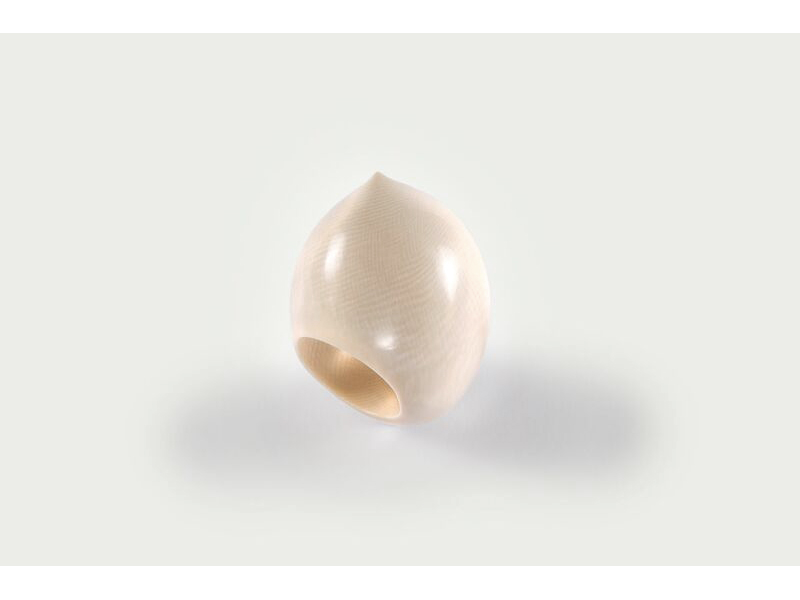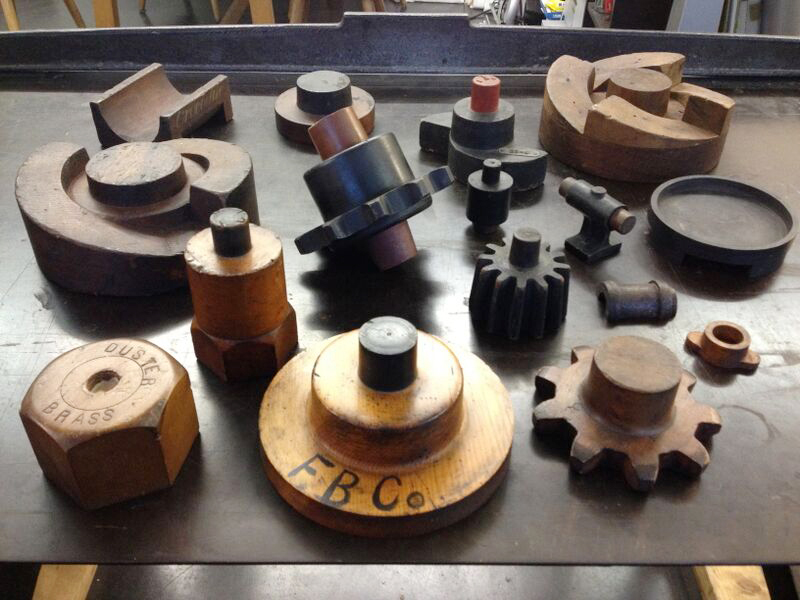
Yutaka Minegishi’s minimalist work embraces the exploration of form and the nuances of natural materials. Working directly with the material, with no predetermined plan or sketch, Yutaka creates intimate tactile work. We spoke with him last summer to discuss his exhibition with Helen Britton and David Bielander, The Bride, the Groom and the Best Man, and now we catch up with him for his solo show Still Twisted at ATTA Gallery, opening February 18 and running to March 27.
Jessica Hughes: What benefits come from working directly with the material without a predetermined plan? Are there any disadvantages?
Yutaka Minegishi: Sure, I waste a huge amount of materials and time, but that’s the only way not to lose interest in the materials and curiosity for the work.
You often refer to the “elephant graveyard” (your drawer of rejects). Will we ever get to see any of the items in this drawer? Could we see a picture of it?
Yutaka Minegishi: Mammoth graveyard! Mammoths chose places to die where they could not be found.
Your pieces have a slight hint of humor—do you find humor an important aspect of your work?
Yutaka Minegishi: I think humor is one of the most human and important things for us.

You work with materials such as ebony, mammoth ivory, pink ivory. How do you choose what materials you work with, and how do you procure them?
Yutaka Minegishi: I like massive, pure, dense natural materials that are one color. There are not so many of them. I work with what I get.
Some materials such as ebony are rare, and the trade of ivory is illegal in most countries. Does the context of these materials ever affect the outcome of the piece? Does it ever affect how people view the piece?
Yutaka Minegishi: I work with mammoth tusk! Nothing to do with poor elephants. Mammoths died out in the Ice Age, not killed by humans.
You share a studio with Helen Britton and David Bielander. How does working in a shared studio affect your work? How do you think it affects theirs?
Yutaka Minegishi: I don’t know really because we are not just professionally related—we travel together, we play music together, etc. But I think it synchronizes positively.
Both Helen and David follow the art world dynamic of showing new series very regularly. You seem to be on a different path: minimal twists and refinements that produce slowly evolving designs. How would you describe this approach, as compared to theirs?
Yutaka Minegishi: That’s their rhythm and mine, I guess.
What are you currently working on, and what direction do you see your work going in in the next five years?
Yutaka Minegishi: I cannot answer that question, but this time, for the exhibition at ATTA Gallery, I made some extra pieces that I normally never show. I have a weakness for collecting tiny, antique, useless objects. I put some of them together, made some neckpieces. I might go that way in a few years.

You said, in a previous interview, that you worked at an auction house. That means, as you stated, that you get to see a lot of art, but I imagine it also gives you a particular insight into the art market. What do you think contemporary jewelry can learn from that market? Can you hazard a guess as to why there are not more auctions of contemporary jewelry?
Yutaka Minegishi: That’s exactly what I was thinking. For example, once a year at the Handwerksmesse, if we were to put on a jewelry auction in Munich, there would be the possibility to collect not only the newest work, but older pieces by the artist. You might be able to get a piece by Hermann Jünger!

I’ve read that you are also a musician. What kind of music do you play? Do you find that music affects your work? What are you listening to now?
Yutaka Minegishi: I don’t listen to music very much, as I play [some myself]. What we play is Japanese blues. We sing everything in Japanese. The most important thing is that people don’t understand my text.
What work have you seen lately that you’ve found most interesting/exciting?
Yutaka Minegishi: Our new record!

The works in this exhibition are priced between 1,200 and 3,600 euros (US$1330 to $3990).




